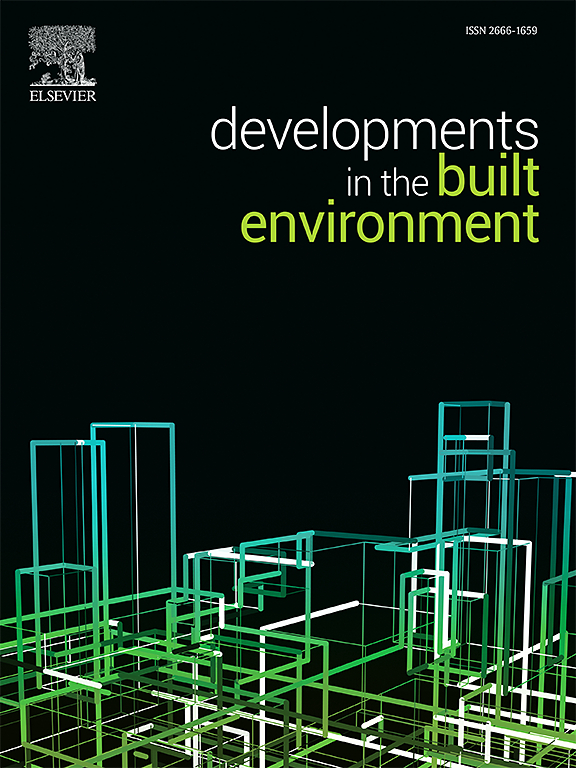基于预测聚类模型的建筑工人脑电波监测脑电信号清洗
IF 8.2
2区 工程技术
Q1 CONSTRUCTION & BUILDING TECHNOLOGY
引用次数: 0
摘要
使用脑电图(EEG)信号越来越被认为是评估建筑工人工作量和风险意识的有效方法。然而,由于传感器故障和环境干扰,脑电图信号往往包含明显的异常,阻碍了准确的认知分析。本研究提出了一种鲁棒的脑电信号清洗框架,用于自动检测和重建此类异常数据。该框架将融合注意机制与双向门控循环单元(ATT-BiGRU)模型相结合用于脑电信号预测,并采用基于密度的带噪声应用空间聚类(DBSCAN)算法进行异常检测。预测的数据然后用于重建缺失或损坏的信号段。通过模拟ar辅助室内导航和测量任务的空间感知实验对该框架进行了验证。异常脑电图数据可分为异常值、漂移、缺失和次要信号四种类型。ATT-BiGRU模型的预测RMSE低于0.05,而DBSCAN算法在多个脑电通道上的检测准确率超过96%。使用来自20名参与者的数据进行的额外验证显示,一致性准确率高于94%。这些结果突出了所提出框架的技术有效性和可扩展性,以及它在复杂建筑环境中支持认知监测的潜力。通过增强EEG信号的可靠性,该框架为建筑认知评估提供了更有效的工具,为以人为本的设计策略提供了信息,并为响应用户实时神经生理状态的自适应环境奠定了基础。本文章由计算机程序翻译,如有差异,请以英文原文为准。
EEG signal cleaning for brain wave monitoring of construction workers using prediction and clustering models
The use of electroencephalogram (EEG) signals is increasingly recognized as an effective method for assessing the workload and risk awareness of construction workers. However, due to sensor malfunctions and environmental interference, EEG signals often contain significant anomalies that hinder accurate cognitive analysis. This study proposes a robust EEG signal cleaning framework to automatically detect and reconstruct such abnormal data. The framework combines a fusion attention mechanism with a bidirectional gated recurrent unit (ATT-BiGRU) model for EEG signal prediction and employs the density-based spatial clustering of applications with noise (DBSCAN) algorithm for anomaly detection. The predicted data are then used to reconstruct missing or corrupted signal segments. A spatial perception experiment simulating AR-assisted indoor navigation and measurement tasks is conducted to validate the framework. Abnormal EEG data are categorized into four types: outliers, drift, missing, and minor signals. The ATT-BiGRU model achieves a prediction RMSE below 0.05, while the DBSCAN algorithm demonstrates over 96 % detection accuracy across multiple EEG channels. Additional validation using data from 20 participants shows consistent accuracy above 94 %. These results highlight both the technical efficacy and scalability of the proposed framework, as well as its potential for supporting cognitive monitoring in complex-built environments. By enhancing EEG signal reliability, the framework enables more effective tools for architectural cognition assessment, informs human-centered design strategies, and lays the foundation for adaptive environments that respond to users’ real-time neurophysiological states.
求助全文
通过发布文献求助,成功后即可免费获取论文全文。
去求助
来源期刊

Developments in the Built Environment
Multiple-
CiteScore
7.40
自引率
1.20%
发文量
31
审稿时长
22 days
期刊介绍:
Developments in the Built Environment (DIBE) is a recently established peer-reviewed gold open access journal, ensuring that all accepted articles are permanently and freely accessible. Focused on civil engineering and the built environment, DIBE publishes original papers and short communications. Encompassing topics such as construction materials and building sustainability, the journal adopts a holistic approach with the aim of benefiting the community.
 求助内容:
求助内容: 应助结果提醒方式:
应助结果提醒方式:


